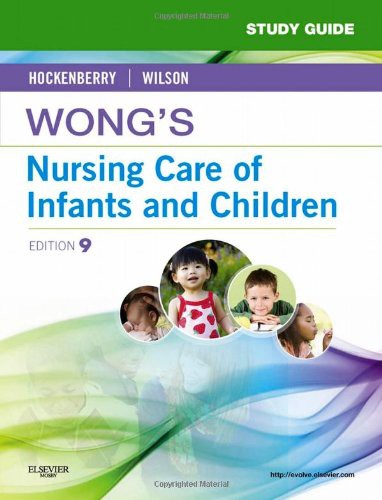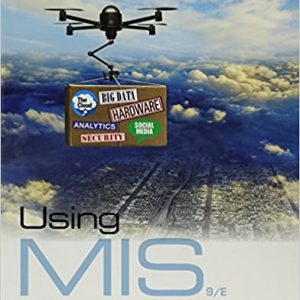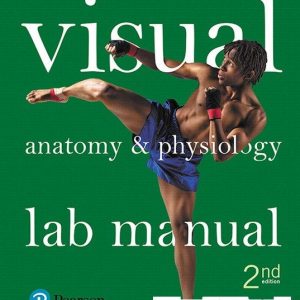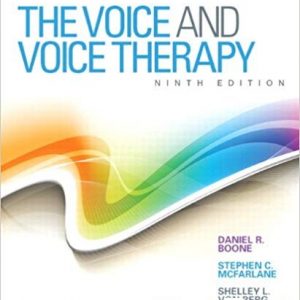This is completed downloadable of Wong’s Nursing Care of Infants and Children 9 Ed, Study Guide
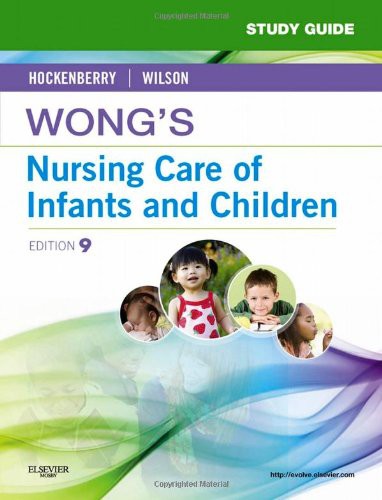
Product Details:
- ISBN-10 : 0323071236
- ISBN-13 : 978-0323071239
- Author: Study Guide
Master key concepts and apply them to the practice setting! Corresponding to the chapters in Wong’s Nursing Care of Infants and Children, 9th Edition, by Dr. Marilyn Hockenberry and David Wilson, this study guide helps you review material and reinforce your understanding of pediatric nursing with multiple-choice, matching, and true/false questions, along with case studies and critical thinking questions.
Student-friendly features include:
- Key terms
- Multiple-choice, matching, fill-in-the-blank, short answer, and true/false questions
- Critical thinking case studies
- Answer key
- Perforated pages for easy removal
Table of Content:
- 1: Perspectives of Pediatric Nursing
- Critical Thinking—Case Study
- 2: Social, Cultural, and Religious Influenceson Child Health Promotion
- Critical Thinking
- 3: Family Influences on Child Health Promotion
- Critical Thinking—Case Study
- 4: Community-Based Nursing Care of the Child and Family
- Critical Thinking—Case Study
- 5: Hereditary Influences on Health Promotion of the Child and Family
- Critical Thinking—Case Study
- 6: Communication and Physical Assessment of the Child
- Critical Thinking—Case Studies
- 7: Pain Assessment and Managementin Children
- Critical Thinking—Case Studies
- 8: Health Promotion of the Newborn and Family
- Critical Thinking—Case Study
- 9: Health Problems of the Newborn
- Critical Thinking—Case Study
- 10: The High-Risk Newborn and Family
- Critical Thinking—Case Study
- Critical Thinking—Case Study
- 11: Conditions Caused by Defects in Physical Development
- Critical Thinking—Case Study
- 12: Health Promotion of the Infant and Family
- Critical Thinking—Case Study
- 13: Health Problems During Infancy
- Critical Thinking—Case Study
- 14: Health Promotion of the Toddler and Family
- Critical Thinking—Case Study
- 15: Health Promotion of the Preschooler and Family
- Critical Thinking—Case Study
- 16: Health Problems of Early Childhood
- Critical Thinking—Case Study
- 17: Health Promotion of the School-Age Child and Family
- Critical Thinking—Case Study
- 18: Health Problems of Middle Childhood
- Critical Thinking—Case Study
- 19: Health Promotion of the Adolescent and Family
- Critical Thinking—Case Study
- 20: Physical Health Problems of Adolescence
- Critical Thinking—Case Study
- 21: Behavioral Health Problems of Adolescence
- Critical Thinking—Case Study
- 22: Family-Centered Care of the Child with Chronic Illness or Disability
- Critical Thinking—Case Study
- 23: Family-Centered End-of-Life Care
- Critical Thinking—Case Study
- 24: The Child with Cognitive, Sensory, or Communication Impairment
- Critical Thinking—Case Study
- 25: Family-Centered Home Care
- Critical Thinking—Case Study
- 26: Family-Centered Care of the Child During Illness and Hospitalization
- Critical Thinking—Case Management
- 27: Pediatric Variations of Nursing Interventions
- Critical Thinking—Case Study
- 28: Balance and Imbalance of Body Fluids
- Critical Thinking—Case Study
- 29: Conditions That Produce Fluid and Electrolyte Imbalance
- Critical Thinking—Case Study
- 30: The Child with Renal Dysfunction
- Critical Thinking—Case Study
- 31: The Child with Disturbance of Oxygen and Carbon Dioxide Exchange
- Critical Thinking—Case Studies
- 32: The Child with Respiratory Dysfunction
- Critical Thinking—Case Study
- 33: The Child with Gastrointestinal Dysfunction
- Critical Thinking—Case Study
- 34: The Child with Cardiovascular Dysfunction
- Critical Thinking—Case Study
- 35: The Child with Hematologic or Immunologic Dysfunction
- Critical Thinking—Case Study
- 36: The Child with Cancer
- Critical Thinking—Case Study
- 37: The Child with Cerebral Dysfunction
- Critical Thinking—Case Study
- 38: The Child with Endocrine Dysfunction
- Critical Thinking—Case Study
- 39: The Child with Musculoskeletal or Articular Dysfunction
- Critical Thinking—Case Study
- 40: The Child with Neuromuscular or Muscular Dysfunction
- Critical Thinking—Case Study
- Answer Key

